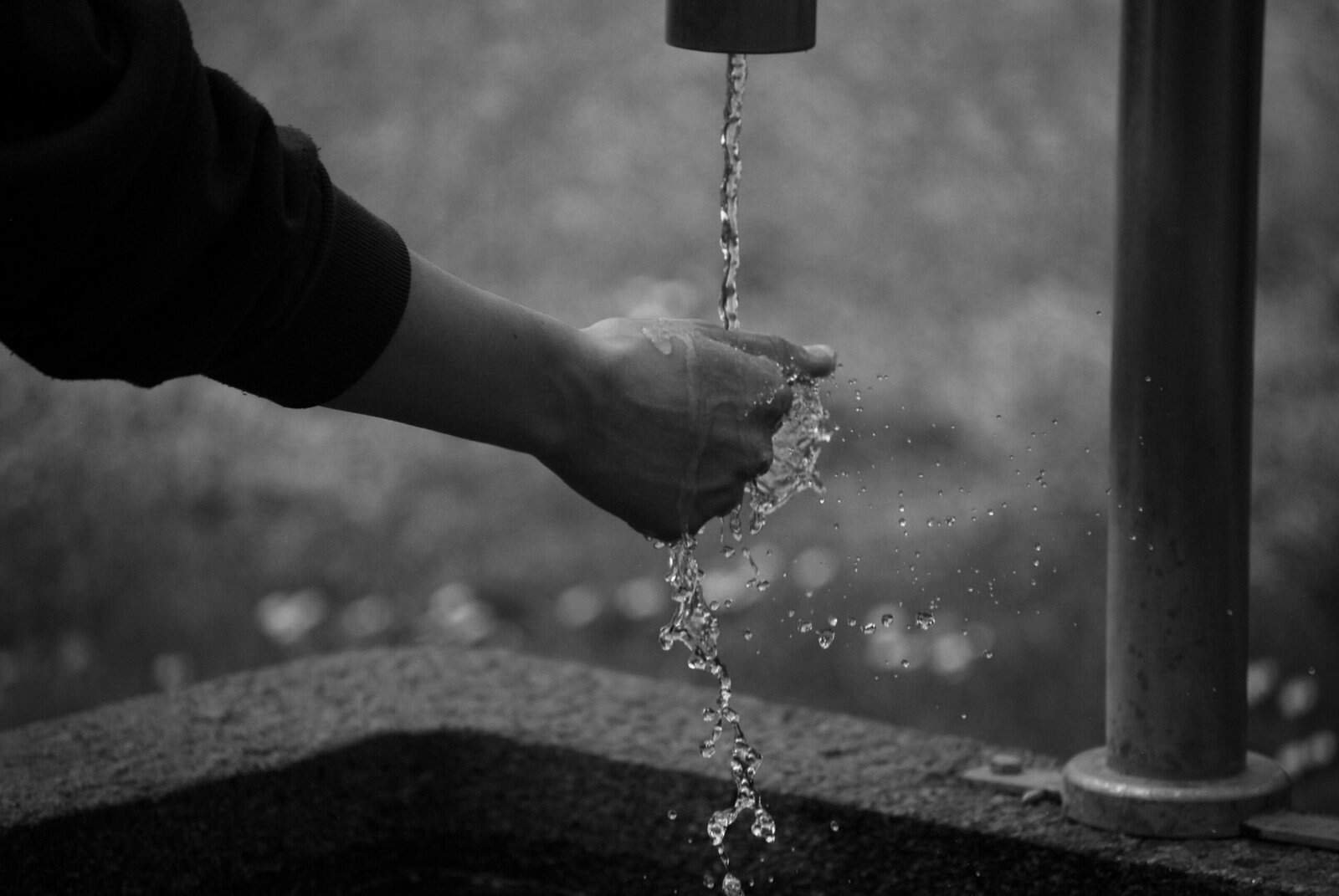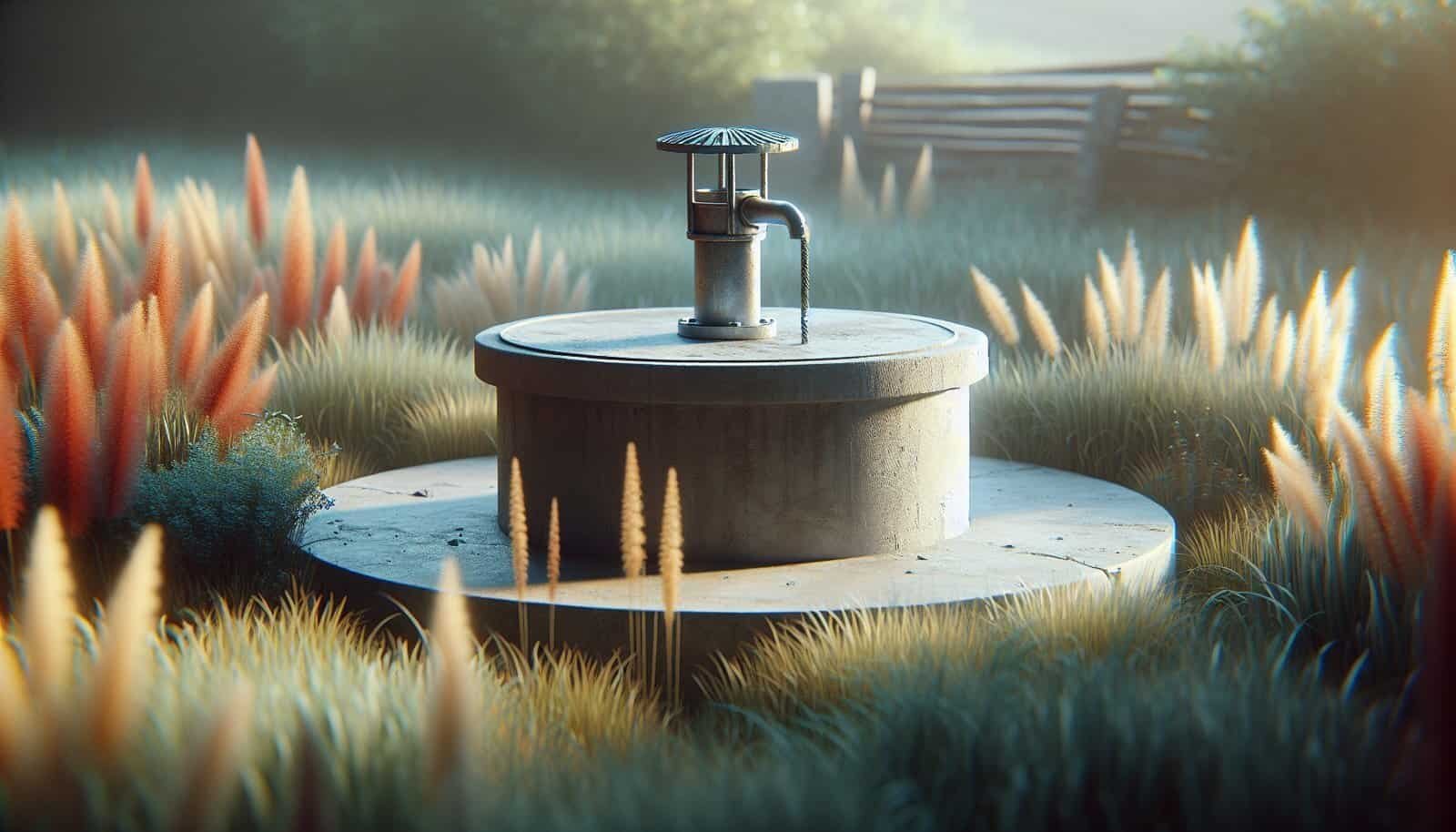Are you trying to figure out how far a septic tank should be from a well on your property and what checks you should perform after drilling a new well?

Why distance between a septic tank and a well matters
Keeping a safe distance between your septic system and your well protects your household water supply from pathogens, chemicals, and nutrients that can migrate through soil and groundwater. You rely on that well for drinking, cooking, and bathing, so contamination can pose serious health risks and costly remediation.
Basic concept of contamination pathways
Groundwater flows, soil permeability, fractures in bedrock, and surface runoff are all pathways that allow septic effluent to reach a well. Understanding how contaminants travel helps you choose an appropriate setback and perform effective safety checks after a new well is installed.
Key contaminants from septic systems
Septic systems can introduce bacteria (E. coli, total coliforms), viruses, nitrates, phosphates, and organic chemicals into groundwater. You should be particularly watchful for nitrates and bacteria because they are common, mobile, and pose direct health risks—especially for infants and pregnant people.
General setback guidelines and why they vary
Minimum separation distances vary widely by jurisdiction because local geology, groundwater depth, and regulatory frameworks differ. Many areas set a minimum required distance, but safe setbacks often exceed those minimums when soil and hydrogeology are considered.
Typical ranges used in practice
Most guidance and regulations suggest:
- Minimum 50 feet (15 m) between a well and a septic tank in some U.S. jurisdictions.
- Minimum 100 feet (30 m) or more between a well and a septic drainfield or leach field.
- Larger setbacks of 200–300 feet (60–90 m) in fractured rock or very permeable soils.
These are typical ranges; your local health or environmental agency may require different distances.
Table: Common setback distances and their purpose
| System component | Typical minimum setback (common guidance) | Why it matters |
|---|---|---|
| Well to septic tank | 50 ft (15 m) | Reduces immediate risk from leaks or tank overflows |
| Well to drainfield (leach field) | 100–200 ft (30–60 m) | Drainfields continuously release effluent; distance allows soil to filter pathogens |
| Well to replacement (reserve) drainfield | 100–300 ft (30–90 m) | Reserve systems should be farther to protect future well safety |
| Well to mound system | 100–200 ft (30–60 m) | Mound systems are often elevated and can influence shallow groundwater |
| Well to pump chamber or dosing tank | 50–100 ft (15–30 m) | Pumping can push effluent into surrounding soils faster |
| Well to property boundary or neighboring septic | Variable | Prevents cross-contamination between properties |
These distances are illustrative. Always verify with local code and a site-specific evaluation.
Site-specific factors that control safe distance
Your property’s soils, bedrock, slope, depth to groundwater, and seasonal water table variations all influence how contaminants travel. A small setback that’s safe on clay-rich soil may be unsafe on sand or fractured rock.
Soil texture and permeability
Coarse-grained soils (sands, gravels) transmit water quickly and offer little pathogen removal, so you’ll need larger setbacks. Fine-grained soils (clays) slow movement and provide more filtering, allowing shorter setbacks in some cases.
Depth to groundwater
Shallow groundwater means contaminants have less soil to travel through, so distance must be increased or additional protective measures applied. If groundwater is very near the surface, some sites may be unsuitable for conventional septic systems.
Bedrock and fractures
Fractures in rock can transport contaminants rapidly over long distances. In fractured bedrock settings, setbacks of several hundred feet or installation of deeper wells may be required to ensure safety.
Slope and directional groundwater flow
Groundwater generally moves in a horizontal direction. Locate your well uphill and preferably cross-gradient from the septic system so effluent is unlikely to move toward the well. If your well is downslope from a septic system, risk increases.
Seasonal factors and storm events
Heavy rains and seasonal rises in the water table can shorten the effective separation between septic effluent and groundwater. Consider seasonal peaks when evaluating setbacks.

How regulations approach setbacks
Local public health departments, state environmental agencies, and building codes set minimum distances and design standards. They often require a site evaluation and may deny permits for wells or septic systems if conditions grant high risk of contamination.
Steps regulators commonly require
- Site inspection and soil percolation testing.
- Measurement of depth to seasonal high groundwater.
- Well log documentation and wellhead protection details.
- Septic system design approval with setback verification.
Table: Examples of regulatory setbacks (illustrative only)
| Jurisdiction example | Well-to-tank | Well-to-drainfield |
|---|---|---|
| State A (conservative) | 100 ft (30 m) | 200 ft (60 m) |
| State B (moderate) | 50 ft (15 m) | 100 ft (30 m) |
| Local rural code | 75 ft (23 m) | 150 ft (45 m) |
These are sample numbers to show variability. Always check your specific county or state rules.
Design choices to reduce risk
If your property conditions make standard setbacks difficult, consider design alternatives that reduce contamination risk:
Advanced treatment systems
Systems that provide additional pathogen removal (aerobic treatment units, packaged treatment plants) can lower contaminant loads before effluent reaches the soil.
Constructed wetlands or treatment trenches
These can further polish effluent before it reaches groundwater but require space and maintenance.
Deep, sealed wells
Drilling deeper wells with properly sealed casings and grouted annuli can reduce the risk of surface or shallow groundwater contamination entering the well.
Mound or engineered systems
In high groundwater areas, mound systems raise the effective depth of the treatment zone; they are engineered to provide pathogen removal in otherwise unsuitable soils.

Siting best practices for your well and septic system
Good siting reduces risk and long-term maintenance. Use these principles when planning or evaluating installations.
Place the well uphill of the septic system
Putting your well uphill reduces the likelihood that groundwater flow will carry septic effluent toward the well.
Maximize horizontal separation where possible
Even if the law allows a shorter setback, more distance is safer. If your lot is constrained, combine distance with advanced treatment or deeper wells.
Keep surface drainage directed away from the well
Preventing surface runoff from crossing the well head reduces the chance that contamination will enter the well annulus or immediate surroundings.
Protect the wellhead
Use a sanitary well cap, maintain a concrete pad or berm to prevent pooling, and keep hazardous substances away from the well.
Assessing your property: a step-by-step guide
You can do an initial informal assessment before calling professionals.
- Locate existing or planned septic components and proposed well location with GPS or measured distances.
- Determine slope and flow direction of surface water.
- Identify nearby potential contamination sources (fuel tanks, animal yards, chemical storage).
- Review property soil reports or request percolation tests.
- Check local codes for minimum setbacks and permit requirements.
- Contact your local health or environmental agency for guidance and required inspections.
Mapping and record-keeping
Create a simple map showing well location, septic tank, drainfield, property boundaries, and other features. Keep copies of well logs, permit documents, and water test results for future reference and resale.

What to do before drilling a new well
A planned approach reduces health risks and avoids costly rework.
Obtain site clearance and permits
Your local health department may need to approve the well site relative to septic locations before drilling.
Conduct a geological and hydrological review
A professional can assess depth to groundwater, expected yield, and contamination risk. This helps select the appropriate well depth and location.
Mark underground utilities and septic system components
Call utility locating services and locate septic components to keep drill rigs and equipment clear of critical infrastructure.
What safety checks should you do after drilling a new well?
After a new well is drilled, perform a set of immediate and follow-up checks to ensure the water is safe before consumption.
Immediate visual and structural checks
Inspect the wellhead for proper casing, sanitary seal, and intact well cap. Verify that the well is grouted properly to prevent surface water infiltration along the borehole.
Disinfection of the new well (shock chlorination)
Most new wells require disinfection to remove microbes from drilling. Add appropriate chlorine solution, circulate it through the system, let it sit for the recommended contact time (usually several hours), then flush until chlorine smell is gone.
Microbiological testing (bacteria)
Test for total coliform and E. coli bacteria immediately after drilling and again after chlorination. These results confirm whether disinfection succeeded and if the well is free of bacterial contamination.
Chemical testing (nitrate, fluoride, arsenic, lead, etc.)
Test for nitrates, especially if your property has nearby septic systems or agricultural activity. Depending on local geology and history, test for arsenic, lead, manganese, iron, and other regional concerns.
Testing for turbidity and conductivity
High turbidity can protect bacteria from disinfection and indicate ongoing contamination or poor casing. Conductivity helps detect total dissolved solids and possible contamination sources.
Radon and volatile organic compounds (VOCs)
If your area has known radon or VOC risks, or if industrial contamination is possible nearby, include these tests.
Baseline mineral and metal analysis
Obtain a baseline suite of tests (hardness, pH, alkalinity, metals) so future changes are easier to detect.
Recommended timeline for tests after drilling
- Immediately after drilling: physical inspection and initial bacteriological test.
- After shock chlorination and flushing: repeat bacteriological test (typically 1–2 weeks after chlorination).
- Within 1 month: comprehensive chemical panel if not done at initial testing.
- Ongoing: annual bacteriological testing and nitrate testing; chemical tests every 2–5 years depending on regional risks.

Table: Post-drilling testing checklist and timing
| Test / Action | When to do it | Why it’s important |
|---|---|---|
| Visual wellhead inspection | Immediately | Check casing, cap, and sanitary seal |
| Shock chlorination | Immediately after drilling | Remove microbes introduced by drilling |
| Bacterial test (total coliform / E. coli) | Immediately and after chlorination (1–2 weeks) | Confirms microbial safety |
| Nitrate test | Within 1 month, then annually | Nitrate is mobile and a health risk for infants |
| Chemical panel (metals, hardness) | Within 1 month | Establishes baseline water quality |
| VOCs / pesticides | If nearby sources exist | Detects industrial/agricultural contamination |
| Radon (if regional risk) | Within 1 month | Radon can be a health hazard in groundwater |
| Turbidity & conductivity | Immediately | Indicators of contamination or well integrity |
Interpreting test results
You should compare results to national or local drinking water standards (e.g., EPA Maximum Contaminant Levels in the U.S.). For bacteria, any presence of E. coli is unacceptable for drinking water without treatment. For nitrates, EPA MCL is 10 mg/L as nitrate-nitrogen (or expressed differently depending on lab reporting), and levels above that are unsafe for infants.
What to do with an unsafe bacterial result
- Re-chlorinate the well and retest.
- Inspect the wellhead and casing for defects or surface water entry points.
- Review well location relative to septic system and surface runoff.
- Consider installing point-of-entry or point-of-use treatment (e.g., UV systems, chlorination) if contamination recurs.
- Consult a licensed well contractor or local health authority for remediation options.
What to do with elevated nitrates or chemical contaminants
- Identify potential sources (fertilizers, septic system failure, underground storage tanks).
- If due to septic system proximity or failure, repair or replace the septic components and increase setback if re-siting is possible.
- Consider deeper wells or treatment systems (e.g., ion exchange for nitrate).
- Notify local environmental health agency if contamination appears widespread.
Long-term monitoring and maintenance
A one-time safe result is not a guarantee forever. Regular maintenance and testing protect your water supply over time.
Annual tests you should do
- Bacteria (total coliform / E. coli).
- Nitrate (especially if infants or pregnant people will be consuming the water).
- Visual inspection of wellhead and immediate surroundings.
Periodic tests every 2–5 years
- Full chemical and mineral panels.
- Tests for region-specific contaminants (arsenic, manganese, radon).
Well maintenance tasks
- Keep the well cap secure and sanitary.
- Ensure grading directs surface water away from the well.
- Avoid using pesticides, solvents, or storing fuels near the well.
- Service pumps, pressure tanks, and disinfection equipment according to manufacturer recommendations.
If you suspect contamination: immediate actions
- Stop using the water for drinking and cooking; use bottled water for consumption and infant formula.
- Test the water promptly for bacteria and nitrates.
- Boil water for at least one minute for emergency use (boiling kills pathogens but does not remove chemicals).
- Notify your local health department for guidance.
- Investigate and fix septic system issues if they are the likely source.
Preventive measures to protect your well
- Maintain at least the minimum regulatory setbacks and more if possible.
- Regularly inspect and pump your septic tank as recommended (every 3–5 years for typical households, more often for high-use).
- Avoid connecting roof drains, driveway drainage, or sump pumps into the septic system.
- Keep hazardous materials and waste away from well areas.
Working with professionals
You’ll often need at least two types of professionals:
- A licensed well driller or hydrogeologist for well siting and construction.
- A licensed septic designer or installer for system siting and design.
An environmental health officer or county inspector will review permits, ensure setbacks are met, and approve installations. Use professionals experienced with local geology and regulations.
Cost considerations
Increasing setbacks, drilling deeper wells, or installing advanced treatment systems can add cost. However, these investments protect your health and can prevent far more expensive remediation if contamination occurs.
Typical cost items to budget for
- Well drilling and casing (varies by depth and geology).
- Shock chlorination and initial lab tests.
- Comprehensive water quality testing panel.
- Advanced septic treatment or engineered systems if needed.
- Ongoing maintenance, pump service, and periodic testing.
Case example scenarios
Sandy soil, shallow water table
In a setting with sandy soils and shallow groundwater, you should demand larger setbacks (200 ft or more to a leach field) or consider engineered treatment and deeper wells, because contaminants travel quickly.
Clay-rich soil, deep groundwater
Clay soils and deep water tables provide natural protection and may allow shorter setbacks, although you still need to meet regulatory minimums and perform proper inspections.
Fractured bedrock
Fractures can rapidly move contaminants; consider deep wells with long casings that are properly sealed and greater horizontal separation from septic systems.
Frequently asked questions (FAQ)
Is the legal minimum distance safe?
Not always. Legal minimums are the lowest allowed, not necessarily the safest for a given property. Consider site-specific factors and add additional distance if feasible.
Can a well uphill of a septic system still be contaminated?
Yes—if fractured rock, pipe leaks, or improper well construction allow surface or shallow groundwater to enter the well, contamination can occur. Uphill siting reduces risk but does not eliminate it.
How often should I test my well?
Test for bacteria annually. Test for nitrates annually if risk factors exist. Run a comprehensive chemical panel every 2–5 years, or more frequently if local issues exist.
If my well tests positive for bacteria, can I fix it?
Often yes—by disinfecting (chlorination), repairing the wellhead, fixing septic failures, and improving site drainage. Persistent contamination may require deeper wells or other interventions.
Practical checklist: Before and after drilling
Before drilling:
- Check local setback regulations and permits.
- Mark septic components and utilities.
- Conduct site evaluation for slope, soils, and groundwater depth.
- Plan for post-drilling testing and disinfection.
After drilling:
- Inspect well construction and sanitary seal.
- Perform shock chlorination.
- Run bacterial tests immediately and after chlorination.
- Conduct chemical and contaminant-specific tests based on local risks.
- Keep all documentation and lab reports.
Record retention and transfer
Keep all well logs, test results, septic permits, and maintenance records. These documents protect you legally, help with troubleshooting, and add value when selling the property.
Final recommendations
- Always treat setbacks as one part of a broader protection strategy that includes proper well construction, septic maintenance, and regular testing.
- Verify local rules and obtain site-specific advice from licensed professionals.
- Test your well thoroughly after drilling, disinfect it properly, and follow a schedule for re-testing and maintenance to ensure long-term safety.
Resources and who to contact
- Your county or local health department for permits and testing requirements.
- State environmental or well-drilling regulatory agencies for regional guidance.
- Licensed well drillers, hydrogeologists, and septic system designers for professional assessments and installation.
- Certified laboratories for water testing.
If you follow the guidance here—siting with attention to groundwater flow, using sensible setbacks based on your soil and geology, disinfecting and testing newly drilled wells, and maintaining both systems—you will greatly reduce the risk that your septic system will compromise your drinking water.
